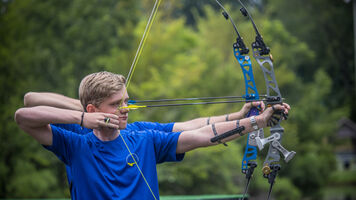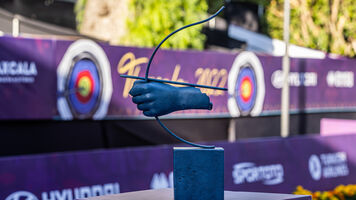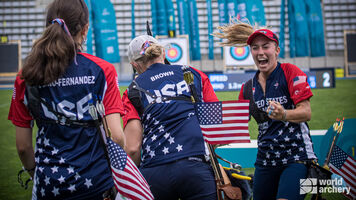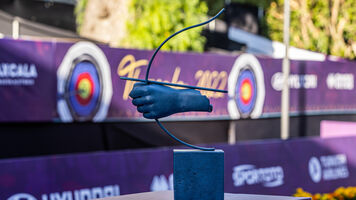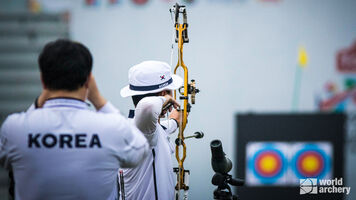Is field archery the answer for a post-pandemic competition fix?
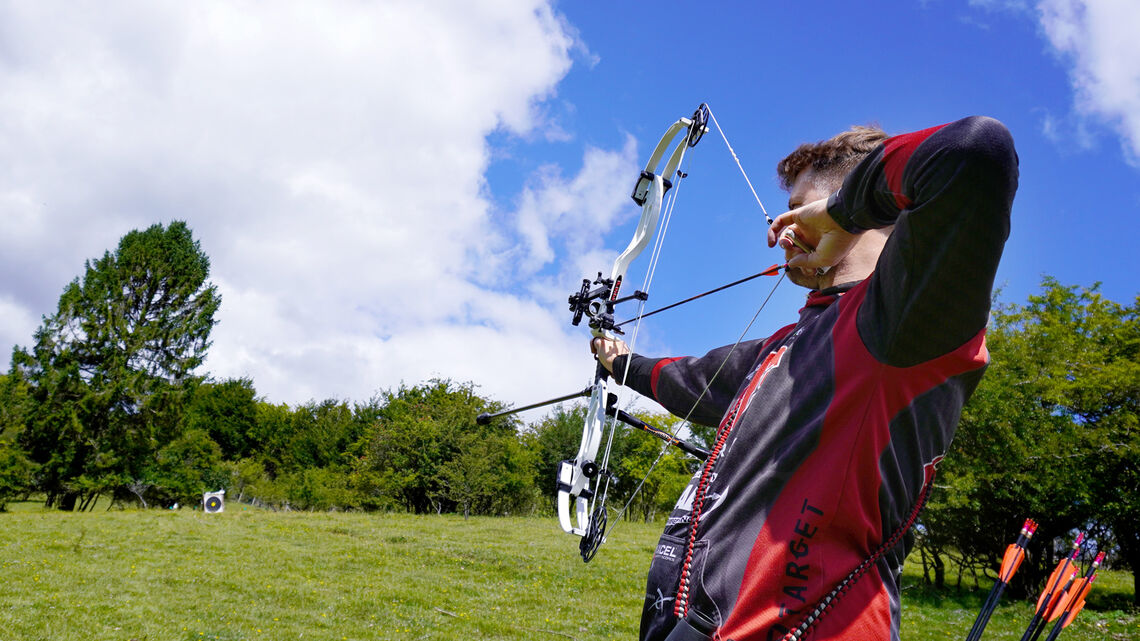
Field archery inherently promotes social distancing. Archers generally traverse the course in groups of four, there’s ample space between and around each target and large groups rarely gather in one place.
While this summer’s World Archery Field Championships in Yankton has been postponed until 2022 due to the ongoing international competition hiatus, the discipline is already proving a popular – and safe – format at local and national levels.
Tournaments were held this weekend in Great Britain and Italy to test procedures that help organisers comply with local COVID-19 regulations and protect the well-being of the people participating.

Tee time or target time?
The competition in Great Britain was held in Overton at the field that hosted the world championships back in 1982. It was a two-day mixed (marked and unmarked) 24-target event – but each archer could only shoot one day.
The event took inspiration from golf. Each group of four archers was pre-selected and given a set time to start their first target, similar to a tee time in golf.
There was always a one-target gap between each group, a maximum of 48 archers – 12 groups – could compete each day and the results were announced by email at the end of the competition, with medals to follow in the post.
“The thing that made the difference started on the gate. Being met by a masked marshal showed that it was different,” said organiser Steve Allam. “Then what was key was keeping each group together and apart from other groups, including in the parking, practice and onto the course.”
Each archer received two ends of warm-up on a practice target before heading out to the field. There were marked waiting areas on the course, two shooting pegs set two metres apart at each target and only a single rest stop at the halfway point.
Groups took an average of four hours to complete the 24 targets.
Masks and sanitiser
The competition in Italy didn’t stagger the start times, but it did reduce the size of each group from four people to three – and require each archer to shoot individually, rather than in pairs.
Everyone on the course had to wear a mask unless they were on the shooting line. And each archer had to carry a small bottle of hand sanitiser for use before pulling their arrows from the target.
Both competitions acquired the contact details of everyone who visited the venue. They also monitored who each person would have made contact with on-site in case any problems arise.

The ‘new normal’
Countries across the globe are lifting restrictions at different speeds. In most, field archery is likely to become a viable format of competition early in the process.
Simple adjustments to the standard way of organising a tournament – and even more radical changes, like the introduction of the staggered start time – could see field archery’s popularity boom in the coming months.
Here’s a checklist of things organisers should consider when planning a competition. (This is not exhaustive, and all events should run to local regulations.)
- Hand sanitiser: Provided at each target, or carried by each archer?
- Course spacing: Are the targets far enough apart?
- Maximum capacity: How many people can the venue accommodate?
- Staggered start: Can people arrive and leave at different times?
- Common areas: How can social distancing be enforced?
- Mandatory masks: Should everybody wear one?
World Archery restarted recognising national events for the purposes of world records and performance awards on 1 July 2020.




